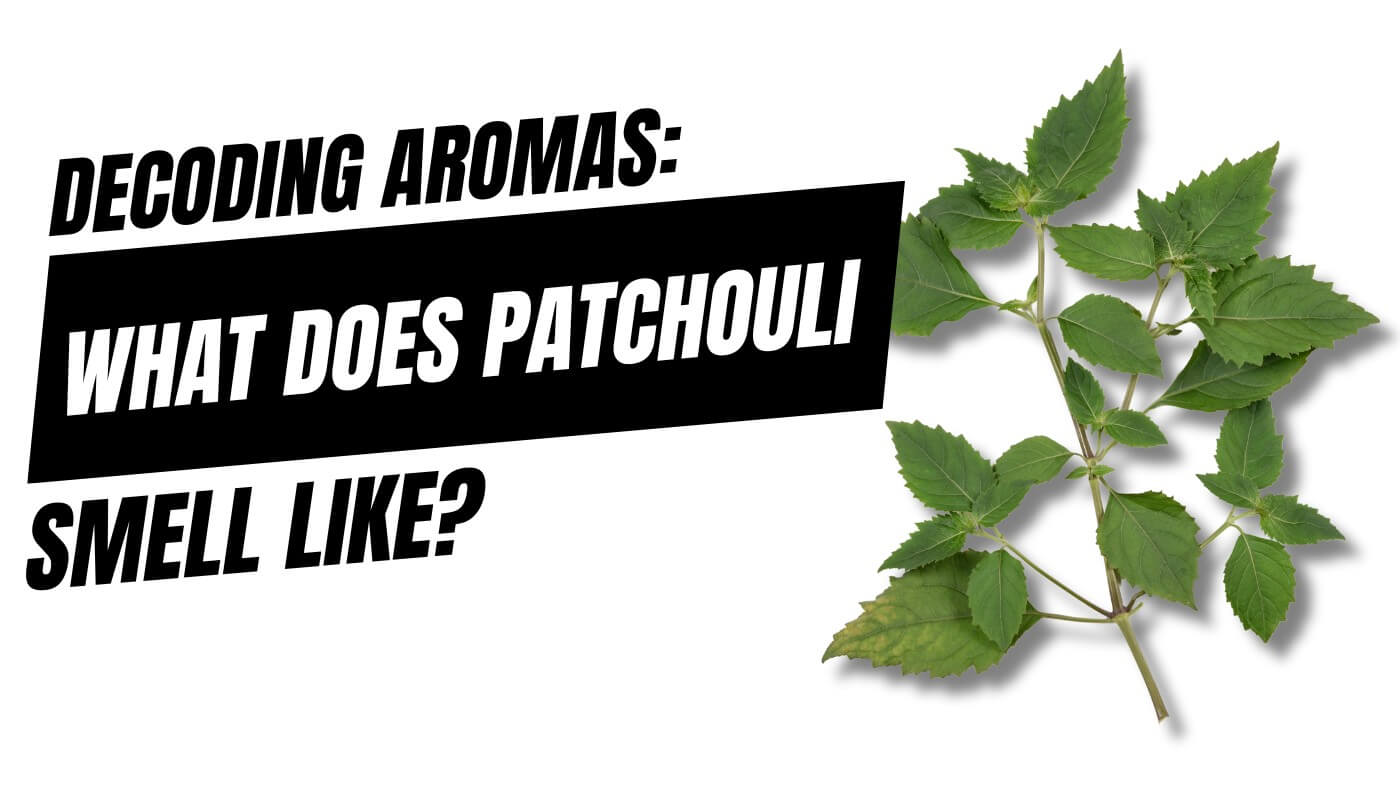What is Patchouli? What Does Patchouli Smell Like?

Patchouli is a fragrant herb native to tropical regions of Asia. It has a rich, musky, and earthy scent.
Patchouli, known scientifically as Pogostemon cablin, is a perennial herb from the mint family. Its distinctive aroma has made it a staple in perfumery, aromatherapy, and incense. The scent is often described as deep, woody, and slightly sweet, making it a popular base note in many fragrances.
Historically, patchouli has been used in traditional medicine and as a moth repellent. Today, it remains a versatile ingredient in various products. Its unique fragrance profile adds depth and complexity to perfumes, candles, and essential oils. Patchouli's earthy aroma evokes a sense of grounding and tranquility, appealing to a wide audience.

Credit: candlelore.com
Introduction To Patchouli
Patchouli is a fragrant herb from the mint family. It is known for its earthy, musky scent. The plant is native to tropical regions of Asia. Patchouli is widely used in perfumes, incense, and essential oils.
Historical Background
Patchouli has a long history. Ancient Egyptians used it in their mummification process. In the 19th century, it became popular in Europe. Traders used patchouli leaves to protect fabrics from moths. The plant’s oil became a symbol of luxury and exoticism.
Cultural Significance
Patchouli holds cultural importance in many regions. In India, it is part of traditional medicine. The oil is believed to have healing properties. In the 1960s, it became a symbol of the counterculture movement. Hippies used it to cover the smell of illicit substances.
Patchouli's scent is strong and distinctive. It has earthy, woody, and sweet notes. This makes it a popular choice for perfumes and aromatherapy.
-
Earthy: Reminds you of wet soil or a forest floor.
-
Woody: Similar to the scent of aged wood.
-
Sweet: Has a subtle, pleasant sweetness.
Patchouli is more than just a scent. It has a rich history and cultural significance. It continues to be a popular choice in modern times.

Credit: islandthymesoap.com
Botanical Characteristics
Patchouli is a unique plant known for its distinctive fragrance. This section explores its botanical features, focusing on plant description and growth conditions.
Plant Description
The patchouli plant, scientifically known as Pogostemon cablin, belongs to the mint family. It typically grows up to 3 feet tall. The plant has broad, green leaves and square stems. Its flowers are small and white with a hint of purple. Patchouli leaves are the primary source of its essential oil. These leaves contain the aromatic compounds.
Growth Conditions
Patchouli thrives in warm, tropical climates. It requires well-drained soil and partial shade. The plant prefers temperatures between 70°F to 85°F. High humidity levels are ideal for its growth. Regular watering is essential, but avoid waterlogging the roots. Patchouli can be grown indoors in pots. Ensure proper sunlight and ventilation for indoor growth.
Extraction Methods
Patchouli, a fragrant herb, is cherished for its aromatic essential oil. Extracting this oil involves various techniques. These methods have evolved over time, balancing tradition and modernity.
Traditional Techniques
The traditional extraction methods have been used for centuries. These methods often involve simple, natural processes.
-
Steam Distillation: Steam is used to separate the oil from the plant.
-
Cold Pressing: This method involves pressing the leaves to extract the oil.
-
Solvent Extraction: Solvents help in pulling out the oil from the leaves.
Each traditional method has its own charm. Steam distillation is common due to its efficiency. Cold pressing is valued for preserving natural scents. Solvent extraction is less common but effective.
Modern Methods
Modern techniques have improved the extraction process. These methods often use advanced technology.
-
Supercritical CO2 Extraction: This method uses CO2 at high pressure to extract oil.
-
Molecular Distillation: A low-pressure method that separates components by boiling points.
-
Ultrasonic Extraction: High-frequency sound waves help in extracting the oil.
Supercritical CO2 extraction is popular for its purity. Molecular distillation offers precise separation. Ultrasonic extraction is fast and efficient.
Both traditional and modern methods have their own benefits. The choice of method affects the quality and aroma of the patchouli oil.
Aromatherapy Uses
Patchouli oil has been cherished for centuries. It is known for its rich, earthy scent and versatile properties. This essential oil is often used in aromatherapy to promote both mental and physical well-being. Let's explore its benefits.
Mental Health Benefits
Patchouli oil can help ease stress and anxiety. Its calming aroma creates a peaceful environment. People often use it in diffusers to improve their mood. The scent can also help with insomnia, promoting a restful night's sleep.
-
Relieves stress
-
Reduces anxiety
-
Improves mood
-
Helps with insomnia
Physical Health Benefits
Patchouli oil has many benefits for the body. It can boost your immune system and help fight off infections. It is also known for its anti-inflammatory properties, which can reduce pain and swelling. Some use it to treat skin conditions like eczema and acne.
|
Benefit |
Effect |
|---|---|
|
Boosts immune system |
Fights infections |
|
Anti-inflammatory |
Reduces pain and swelling |
|
Skin care |
Treats eczema and acne |
Patchouli In Perfumery
Patchouli is a popular ingredient in many perfumes. It has a unique, earthy scent that many people love. Patchouli comes from a plant in the mint family. Its scent is strong and long-lasting. Perfume makers use patchouli to add depth and richness to fragrances.
Fragrance Profiles
The scent of patchouli is complex and layered. It has a deep, earthy base with hints of sweetness. Some people describe it as musky and woody. Others notice a spicy, herbal undertone. Patchouli can smell different depending on how it is used. It can be warm and inviting or bold and intense.
Popular Perfume Blends
Patchouli pairs well with many other scents. Perfume makers often blend it with floral, citrus, and spicy notes. Here are some popular combinations:
-
Patchouli and Rose: This blend is romantic and warm.
-
Patchouli and Orange: This mix is fresh and uplifting.
-
Patchouli and Vanilla: This combination is sweet and comforting.
-
Patchouli and Sandalwood: This blend is earthy and grounding.
Patchouli is a versatile ingredient in perfumery. It adds depth and complexity to many fragrances. Perfume lovers enjoy its rich and unique scent.
Patchouli In Skincare
Patchouli is a popular herb with many benefits for the skin. It has been used for centuries in traditional medicine. This section explores how patchouli can enhance your skincare routine.
Topical Applications
Patchouli oil is a versatile addition to skincare products. It can be used in lotions, creams, and serums. You can also add it to your bath water.
Here are some common ways to use patchouli oil topically:
-
Mix a few drops with your moisturizer.
-
Add it to a carrier oil for a soothing massage.
-
Use it in homemade face masks.
Skin Health Benefits
Patchouli oil offers numerous benefits for the skin. It can help with various skin issues.
|
Benefit |
Description |
|---|---|
|
Anti-inflammatory |
Reduces redness and swelling. |
|
Antibacterial |
Fights off bacteria that cause acne. |
|
Antifungal |
Helps treat fungal infections. |
|
Moisturizing |
Keeps the skin hydrated and soft. |
Patchouli oil is also rich in antioxidants. These protect the skin from damage caused by free radicals. This helps in preventing signs of aging.
Sustainability And Ethics
Patchouli is a unique plant known for its distinctive fragrance. Understanding its sustainability and ethics is crucial. Ethical sourcing and environmental impact play a big role in the patchouli industry. Ensuring these practices helps maintain its natural essence.
Ethical Sourcing
Ethical sourcing of patchouli involves fair trade practices. Farmers should receive fair wages for their work. This supports local communities and their livelihoods.
Many companies now focus on fair trade certifications. This ensures the patchouli is sourced responsibly. It also promotes better working conditions for farmers.
-
Fair wages for farmers
-
Better working conditions
-
Support for local communities
Environmental Impact
Patchouli farming can affect the environment. Sustainable farming practices reduce this impact. These practices include organic farming and reduced pesticide use.
Organic farming avoids harmful chemicals. This helps maintain soil health and biodiversity. Sustainable practices also focus on water conservation.
|
Practice |
Benefit |
|---|---|
|
Organic farming |
Maintains soil health |
|
Reduced pesticide use |
Protects biodiversity |
|
Water conservation |
Saves natural resources |
Adopting these methods leads to a healthier environment. It ensures patchouli remains a sustainable resource.
Conclusion
Patchouli, with its earthy and musky scent, remains a favorite in aromatherapy and perfumery. Its unique aroma offers grounding and calming effects, making it cherished by many. Whether used in perfumes or essential oils, patchouli continues to captivate with its distinctive fragrance and versatile benefits.


